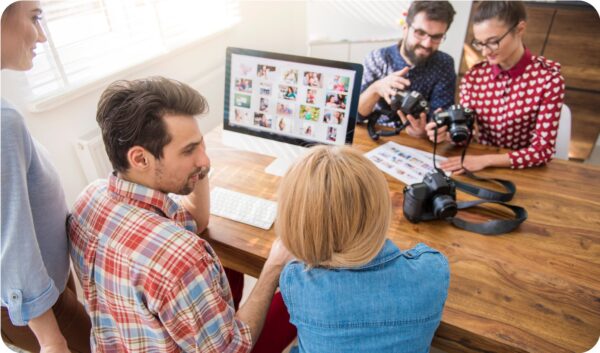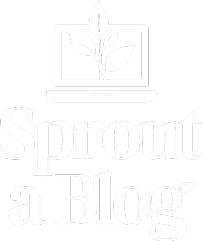Stunning visuals have the power to transform an ordinary blog into an extraordinary one. Whether you’re a seasoned blogger, a content creator, a marketer, or an entrepreneur building an online presence, the right imagery can mean the difference between a reader clicking away or clicking “subscribe.”
This post is your guide to visual blogging mastery. You’ll discover the tools that make creating breathtaking visuals possible, learn how to optimize images for both engagement and SEO, and explore how to use visuals to amplify your brand story. Let’s get started.
Essential Tools for Creating Stunning Visuals
Creating beautiful visuals doesn’t have to be overwhelming, even if you’ve never opened design software. We’ve broken down the best tools across free and paid options, so you can find ones that suit your needs and budget.
Free Stock Photo Resources
High-quality imagery can be expensive, but it doesn’t have to be. Free stock photo sites are a fantastic way to find professional-grade photos without breaking your budget. Here are a few favorites:
- Unsplash – Gorgeous, high-resolution photos contributed by photographers around the world.
- Pexels – A wide variety of images and even free video content.
- Pixabay – A massive library of free photos, alongside illustrations and videos.
Pros:
- Budget-friendly (hello, free!)
- High-quality options available.
- No copyright concerns on these reputable sites.
Cons:
- Images might lack uniqueness since they’re widely available online.
- Limited niche content.
Paid Stock Photo Resources
If you’re looking for highly specific or unique images, paid stock photo platforms are the way to go. Consider these:
- Shutterstock – Known for its vast collection and diverse images.
- Adobe Stock – Integrates seamlessly with Adobe tools, providing access to high-quality visuals.
- iStock by Getty Images – Budget-friendly options for small businesses.
Pros:
- A broader and more unique selection of images.
- Better suited for niche topics or premium projects.
Cons:
- Prices range from affordable to steep, depending on usage needs.
- Subscription fees can add up over time.
Graphic Design Platforms (Free and Paid)
Want something custom? Graphic design platforms make visual creation accessible even for non-designers.
- Canva (Free & Paid): A versatile, user-friendly option for creating graphics.
- Adobe Express (Free & Paid): Great for branded templates and social media visuals.
- Figma (Free & Paid): Ideal for collaborative design projects.
Pros:
- Intuitive and easy-to-learn interfaces.
- Pre-designed templates make customization quick.
- Affordable paid plans compared to hiring a professional designer.
Cons:
- Limited advanced capabilities in free versions.
Using AI for Visuals
AI-powered visual creation tools like DALL-E, MidJourney, and Runway are revolutionizing visual generation. These tools allow users to create unique images and designs based on simple prompts, making it possible to produce high-quality visuals quickly and efficiently.
Pros:
- Efficiency: AI tools can generate visuals in seconds, saving significant time.
- Creativity Unlocked: They empower users to explore unique and unconventional designs that may not be achievable with traditional methods.
- Accessibility: No advanced design knowledge is required to use these tools effectively.
- Cost-Effective: AI tools often eliminate the need to hire a professional illustrator or designer.
Cons:
- Quality Variability: The output may not always meet expectations, requiring multiple iterations.
- Ethical Considerations: Using AI-generated visuals raises concerns about originality and intellectual property.
- Dependence on Prompts: To create killer visuals, you’ll need to nail the prompts—craft them sharp, or your results will fall flat.
- Limited Customization: Some AI-generated images can lack intricate details or tailoring to specific branding needs.
Best Practices:
- Be Clear with Prompts: Craft detailed and precise prompts to help the AI produce the desired results.
- Combine AI with Manual Edits: Use AI tools as a starting point and refine results further using graphic design software.
- Maintain Brand Consistency: Ensure AI-generated visuals align with your brand’s established aesthetics and voice.
- Use Legitimate Tools: Opt for reputable platforms that comply with copyright and ethical standards.
- Validate Usage Rights: Verify licensing terms and ensure compliance using AI-generated visuals for commercial purposes.
Current Rules for Using AI-Generated Images:
- Copyright Awareness: Many AI tools operate under terms suggesting the user may not fully own the generated images. Always review the specific copyright rules of the tool in use.
- Commercial Use Guidelines: Certain platforms restrict the commercial use of their generated visuals unless specific licensing plans are utilized.
- Transparency: Be transparent about using AI-generated images, especially in professional or collaborative environments.
- Respect for Original Creators: To prevent allegations of plagiarism, avoid generating images that replicate or mimic works of existing artists or copyrighted materials.
Using AI for visuals can be an incredible asset when implemented thoughtfully. Balancing efficiency with ethical considerations ensures a responsible and creative approach to visual design.
Photo Editing Software (Free and Paid)
Transform an average photo into a masterpiece through bold and intentional editing. Here are some options to elevate your images:
- Free:
- GIMP – A powerful open-source alternative to Photoshop.
- Snapseed – Perfect for quick edits on your phone.
- Paid:
- Adobe Photoshop is an excellent alternative for professional editing. While it’s not the only solution available, its capabilities have earned it a respected place among editing software.
- Lightroom – Excellent for photographers and batch processing.
Pros:
- Advanced photo enhancement tools.
- Professional-grade features.
Cons:
- A steeper learning curve for advanced software like Photoshop.
- Subscription models for premium tools can be costly.
Tips for Optimizing Visuals for Engagement and SEO
Crafting jaw-dropping visuals is just the opening move in the creative game. To elevate your blog, you need to optimize your images for engagement and SEO. This crucial step can significantly improve your blog’s performance and user experience. Let’s unpack this.
Image Size and Compression
Optimizing image sizes is a must-do for success. Large images will slow down your website, negatively impacting the user experience and SEO rankings. Optimize your site to boost performance and ensure faster loading times, creating a more seamless experience for visitors. Always compress your images without compromising quality using tools like:
- Free:
- TinyPNG
- ImageOptim
- Paid:
- ShortPixel
- WP Smush Pro (for WordPress users)
Best Practices:
- For best results, strive to keep file sizes below 1 MB. This helps maintain quick loading speeds and improves overall website performance without sacrificing image quality.
- Use the appropriate format (e.g., JPEG for photos, PNG for transparent backgrounds).
Alt Text and File Names
Search engines can’t “see“ your images, but can read your alt text and file names. Use these strategically to improve your rankings.
Alt Text Best Practices:
- Be descriptive yet concise. Example: “Latte art coffee cup on a rustic wooden table.”
- Include your blog’s target keywords naturally.
File Name Best Practices:
- Rename files to something descriptive before uploading. Example: “coffee-cup-latte-art.jpeg“ instead of “IMG_3478.jpeg.”
Using Visuals to Improve Engagement
Visuals can direct attention and reduce bounce rates. Experiment with A/B testing to see which images resonate more with your audience. Are readers engaging more with custom infographics or professional stock photos? Test and learn!
Showcasing Your Brand with Illustrations
Your blog’s visuals should do more than look pretty. They should tell your brand’s story and build a consistent identity.
Creating a Consistent Visual Identity
A cohesive visual identity builds awareness and trust. This includes fonts, color palettes, and the overall style of your images. For example:
- Use consistent filters on photos.
- Stick to a specific palette that aligns with your logo and brand colors.
- Maintain a uniform tone for all graphics and visuals.
Using Visuals to Tell Your Brand Story
Compelling visuals make your content memorable and spark an emotional connection. For instance:
- Use authentic, user-generated visuals to show real experiences with your product.
- Tell a story visually with before-and-after photos, infographics, or short videos.
Elevate Your Blog Today with Visuals That Wow
Visuals aren’t just the cherry on top of great blogging content—they’re often the first thing readers notice. By integrating actionable tips and tools from this blog post, you can captivate your audience, boost SEO, and strengthen your brand identity. So, let’s commit to enhancing our blogs with visuals that truly wow!
Remember, a visually engaging blog is a successful blog. Follow us for more blogging tips to enhance your content!






